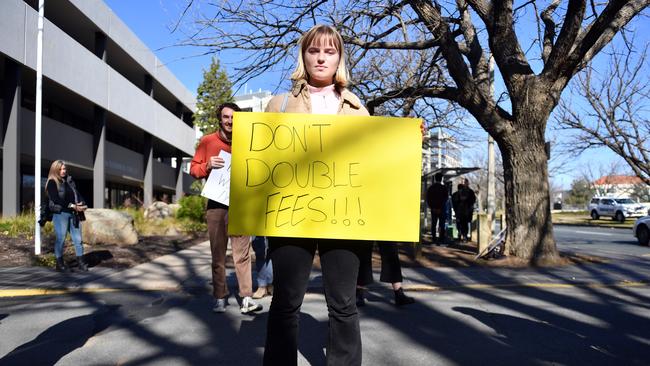
Wheels within wheels? A riddle wrapped up in a mystery inside an enigma? Not quite. Education Minister Dan Tehan’s university course funding package is not quite that impenetrable. But nevertheless it is true that the first release of information last Friday was not enough for universities to yet make a definitive judgment about where it leaves them.
The broad parameters are clear. Tehan had the job of delivering more university places to meet the increased demand from two sources. One is that more people decided to study because they can’t find jobs in the COVID downturn. The other is that the baby bulge — sparked by Treasurer Peter Costello’s baby bonuses in the early 2000s — is going to finish school in a couple of years and want to go to uni.
READ MORE: Next job, research reform | High fees for social work degrees ‘crazy’ | Tehan plays reform roulette | Australia joins computing elite | Bewildered by the the changes
But Tehan didn’t have extra money to pay for it. Now running record deficits, the Morrison government is looking to constrain spending everywhere it can. And there is also a strong vein of anti-university sentiment in the Coalition which would not support more money for universities.
So Tehan had to make his package budget neutral, that is, not require any money beyond what is provided for in the budget forward estimates for the next four years. This means the cost must be borne in two places — higher student fees and extra efficiencies in universities. And Tehan has hit both.
Student fees will pay for 48 per cent course costs in future (compared to 42 per cent now), according to the government’s figuring. And the pain hits universities through a lower surplus earned on their domestic teaching. (One important thing to note is that this package does not impact international students who already pay much higher fees than domestic students.) The result is that other university activities — in particular research — which were paid for with the domestic teaching surplus, will get less money.
According to the government’s calculations universities will continue to make money — on average — on domestic teaching. But average is the key word, because different universities have different patterns of student course enrolment. The upshot is that some universities might be nowhere near “average” profitability, even before operational efficiency is taken into account.
Now the story of Tehan’s reforms gets more complicated. He did more than just charge students more and give universities lower subsidies. He decided also to take the opportunity to make another major change to fees and subsidies which aim to do two things.
One is to charge students less for courses such as nursing, teaching, languages and STEM (science, technology, engineering and maths) subjects which Tehan believes are important in the future economy; and raise the fees on law, business, the humanities and society and culture subjects.
The other is to achieve a closer balance between the revenue universities earn for any particular course (the sum of student fees and government subsidies) and what the course costs. In the longer term this will reduce the economic incentive for universities to favour teaching some subjects over others. But it adds major complexity to each university’s task of calculating the impact of the changes and, in the short term, could drive universities away from previously “oversubsidised” courses where the subsidy is now being reduced.
There is yet more complexity in the package around various“pots” which government funding comes from, and differential rates of funding increases depending on where campuses are located.
Tehan has indicated to vice-chancellors he is ready to discuss and consult on the reforms. They’ll take him up on that, once they have resolved the impact which the package will have. They will almost certainly ask for change.



